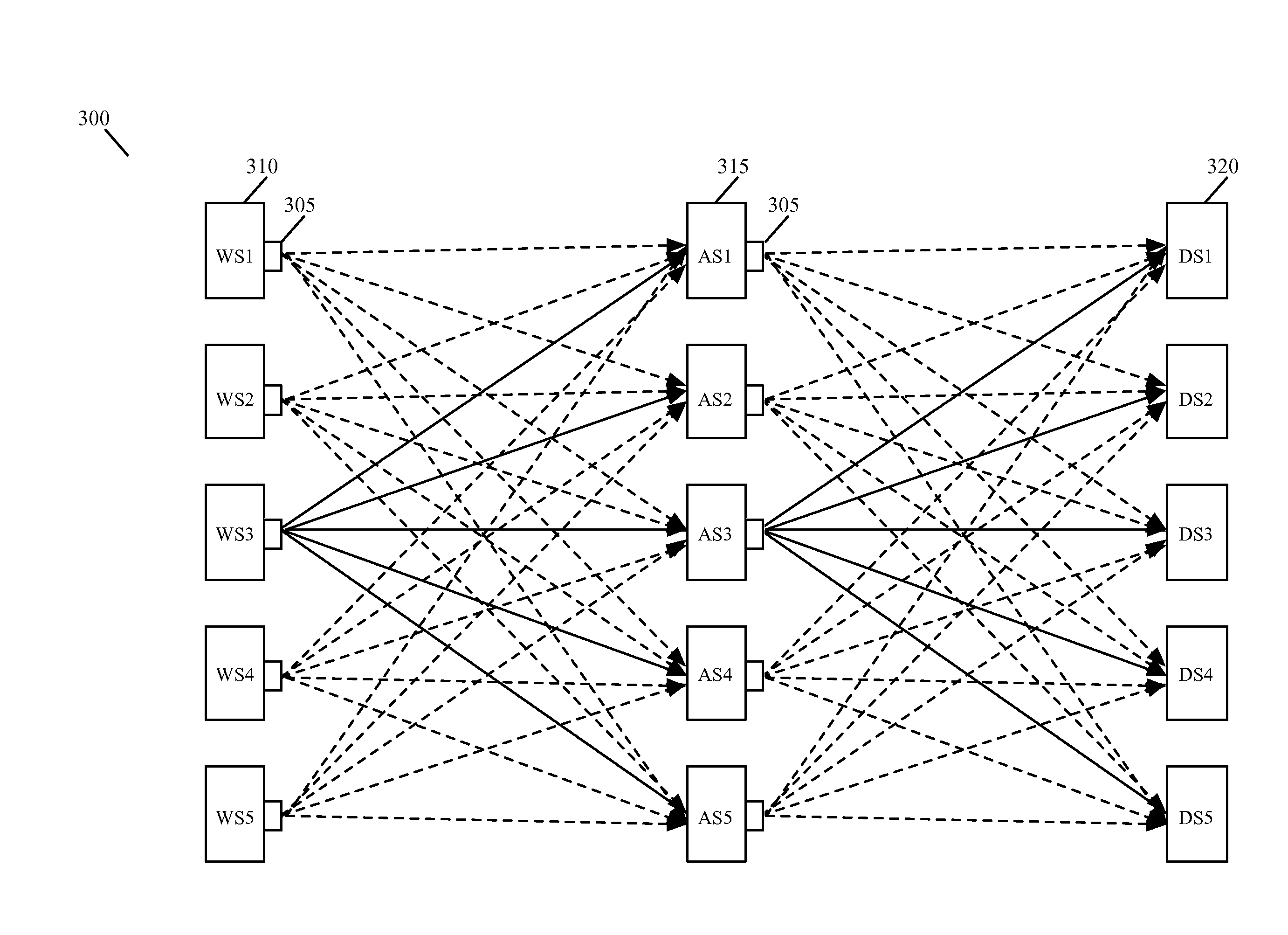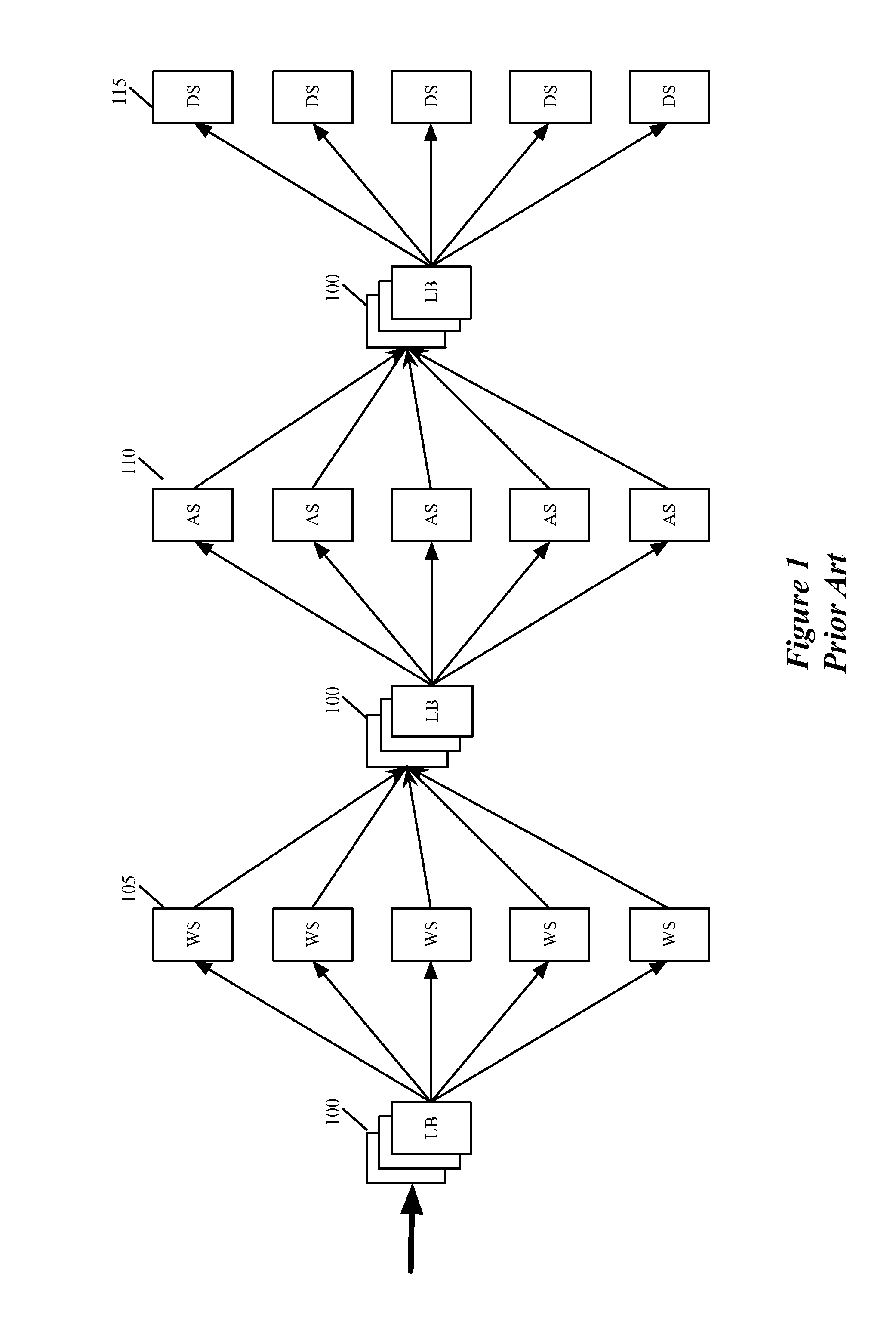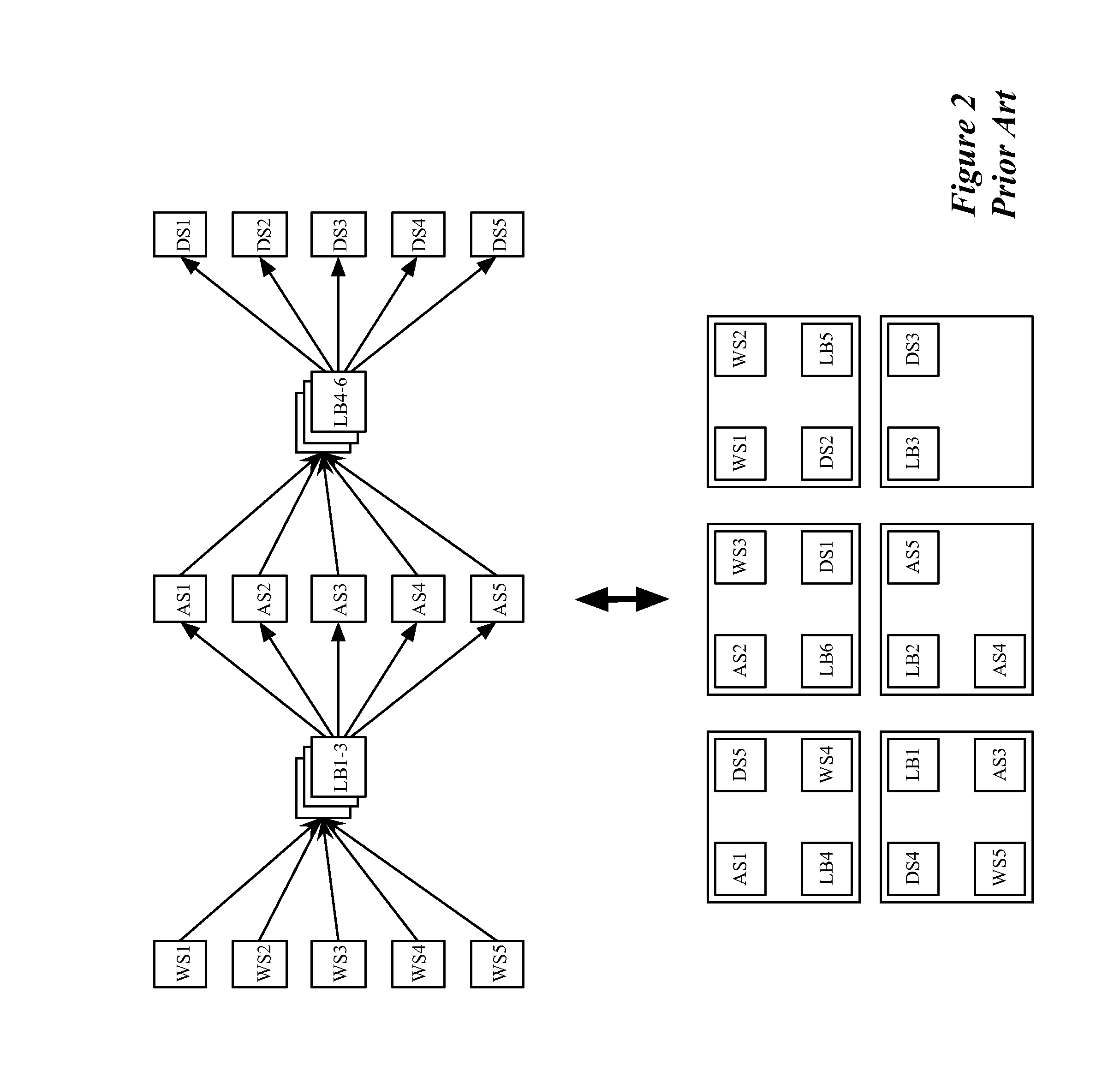Dynamically adjusting load balancing
a load balancing and dynamic adjustment technology, applied in the field of dynamic adjustment load balancing, can solve the problems of reducing the number of computing devices that receive load balancing traffic, unable to seamlessly grow, etc., and achieve the effect of reducing the load on this dcn, facilitating dlb operations, and increasing load
- Summary
- Abstract
- Description
- Claims
- Application Information
AI Technical Summary
Benefits of technology
Problems solved by technology
Method used
Image
Examples
Embodiment Construction
[0029]In the following detailed description of the invention, numerous details, examples, and embodiments of the invention are set forth and described. However, it will be clear and apparent to one skilled in the art that the invention is not limited to the embodiments set forth and that the invention may be practiced without some of the specific details and examples discussed.
[0030]Some embodiments provide a novel method for load balancing data messages that are sent by a source compute node (SCN) to one or more different groups of destination compute nodes (DCNs). In some embodiments, the method deploys a load balancer in the source compute node's egress datapath. This load balancer receives each data message sent from the source compute node, and determines whether the data message is addressed to one of the DCN groups for which the load balancer spreads the data traffic to balance the load across (e.g., data traffic directed to) the DCNs in the group. When the received data mess...
PUM
 Login to View More
Login to View More Abstract
Description
Claims
Application Information
 Login to View More
Login to View More - R&D
- Intellectual Property
- Life Sciences
- Materials
- Tech Scout
- Unparalleled Data Quality
- Higher Quality Content
- 60% Fewer Hallucinations
Browse by: Latest US Patents, China's latest patents, Technical Efficacy Thesaurus, Application Domain, Technology Topic, Popular Technical Reports.
© 2025 PatSnap. All rights reserved.Legal|Privacy policy|Modern Slavery Act Transparency Statement|Sitemap|About US| Contact US: help@patsnap.com



